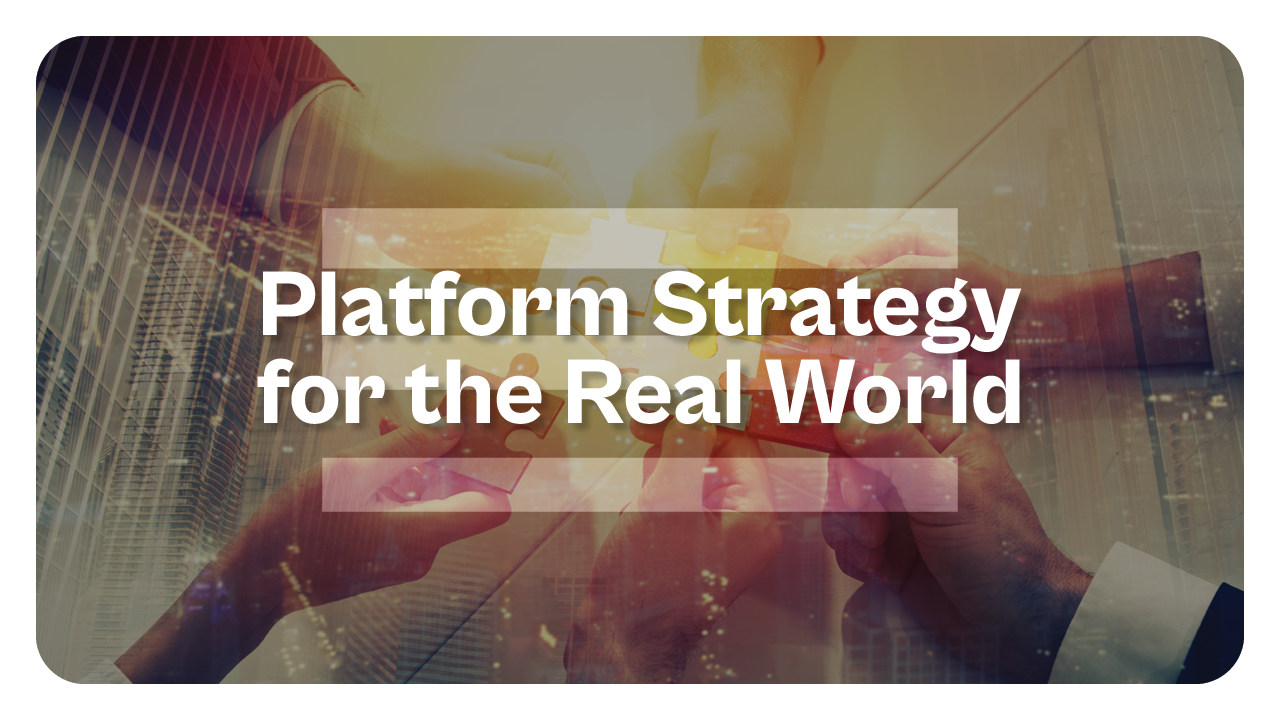
The Head of Platform Playbook: Driving Value in Modern Private Equity and VC

The Head of Platform role has, in recent years, become one of the most important and misunderstood functions in private equity and venture capital.
As competition for deals increases and limited partners expect measurable portfolio impact, the head of platform function has evolved from event planning and CRM upkeep to a strategic engine driving value creation, portfolio company performance, and long-term fund success.
In smaller VC firms or private equity funds, the platform lead often assumes multiple roles: part operating partner, part strategist, and part problem-solver. Their mandate is straightforward: to build scalable programs that enable portfolio companies to succeed while enhancing the fund’s ability to deliver consistent, repeatable results.
This is easier said than done, as any professional will attest. Yet, many hardworking individuals from diverse backgrounds proudly embrace this responsibility. The challenges are endless, the risks significant, and the rewards even greater for those who choose this path.
This playbook is built for platform leaders navigating that path. Those who are looking for solutions to help balance business development, community management, and operational excellence with limited time and resources.
The Evolution of the Platform Role
Not long ago, the platform role was mostly reactive. It was primarily planning networking events, managing investor CRM systems, and coordinating ad-hoc founder requests. It added value, but it wasn’t yet a structured part of platform strategy or strategic planning.
Today, the Head of Platform is central to the firm’s strategic vision. Platform work now touches recruiting, GTM strategy, data analytics, and operational efficiency (areas that directly improve portfolio company performance and fund returns).
In our work with platform teams across venture capital and private equity, one pattern stands out: the most effective platform heads build systems and communities. They anticipate resource gaps, standardize programs, and measure their strategic impact on both founder satisfaction and portfolio outcomes. They also create an environment of peer to peer support, knowledge sharing, mentorship, and guidance.
The Four Pillars of a Modern Platform
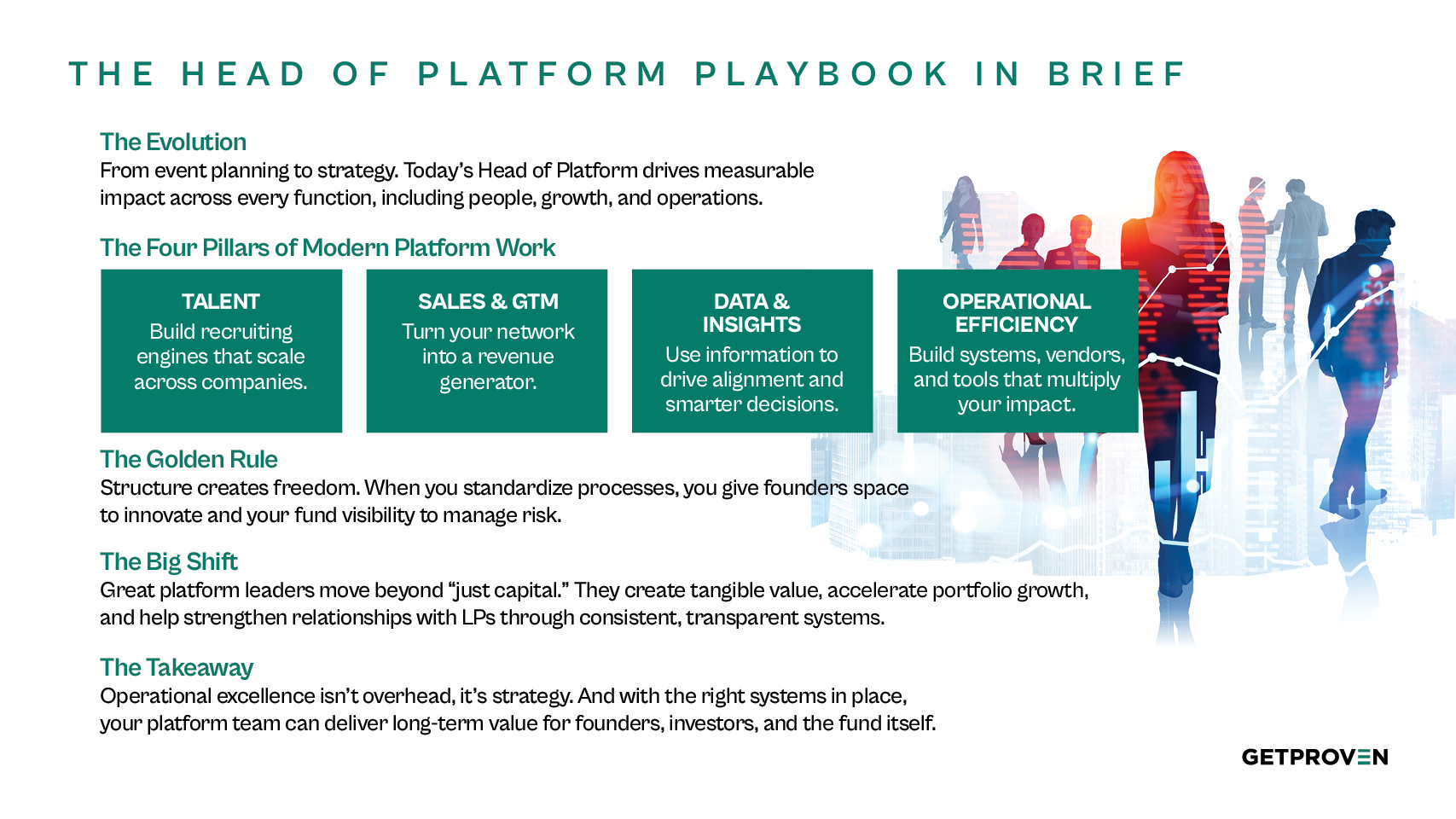
1. Talent: Building a Scalable Recruiting Engine
Ask any Head of Platform what keeps founders up at night, and you’ll hear the same answer again and again: finding and keeping the right people. Talent is the oxygen of every early stage company, yet recruiting is often where the biggest resource gaps show up. Most founders are selling, hiring, and fundraising all at once, leaving little time to build thoughtful pipelines or refine hiring processes.
The platform team can have an outsized, visible impact in this area. Great platform leaders don’t just respond when a portfolio CEO calls in a panic looking for a VP of Sales. Instead they build systems that make those calls less frequent.
At smaller vc firms and private equity funds, this might mean wearing multiple hats such as a recruiter, networker, and coach. The goal is always the same: create an engine for talent acquisition that scales with the fund.
Here’s what that looks like in practice:
- Develop proactive recruiting pipelines. Build long-term relationships with executive search firms, advisors, and “friendlies” in your network. Keep an always-on list of vetted operators and rising stars. Think of it as your own internal recruiting pipeline.
- Centralize access to candidates. A shared referral or alumni database saves founders hours of searching and reduces reliance on expensive contingency recruiters.
- Bring structure to hiring. Share consistent interview templates, competency models, and compensation benchmarks so each company can hire confidently.
- Invest in community. Run small, high-value community events (dinners, Slack groups, or invite-only networking events) where talent, founders, and your fund team connect naturally.
When done well, the result is more than filled roles. It’s founder satisfaction, stronger leadership benches, and visible proof that your platform work drives measurable outcomes.
Pro Tip:
Track time-to-hire, retention, and placement satisfaction across your portfolio companies. Nothing builds credibility with general partners faster than data that ties your platform initiatives to performance.
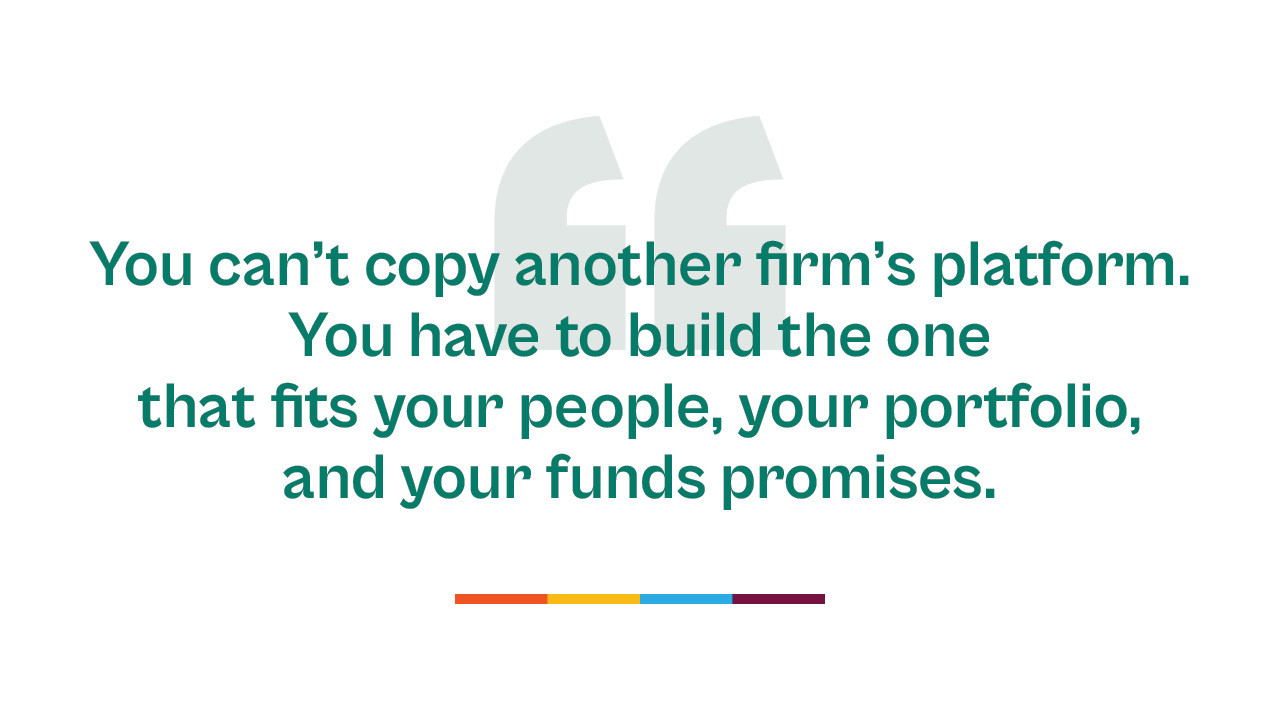
2. Sales & GTM: Driving Revenue Growth
If hiring great people is the first test of a strong platform, helping them find customers is the second. For many early stage companies, especially in competitive or emerging markets, customer acquisition can feel like pushing a boulder uphill.
Founders juggle product, fundraising, and team management, which often leaves go-to-market strategy and business development underdeveloped.
This is where the Head of Platform can move the needle in a way that directly affects portfolio company performance. Modern platform leaders see their network not as a list of names, but as a living marketplace, a system of relationships that can generate introductions, partnerships, and shared insight across the fund’s ecosystem.
If working in a smaller firm, you may not have a dedicated BD team, which means as the platform head, you need to step in as part strategist, part connector. You’re building a bridge between founders and opportunities, and that bridge compounds in value over time.
How to Put It Into Practice
- Map your relationship capital. Start with your own network (board members, advisors, limited partners, and alumni). Tag them by sector and buying authority. Use a light CRM or spreadsheet if you must; what matters is visibility.
- Orchestrate introductions deliberately. Pair companies with potential customers who can test or adopt their product. Track these intros the way a sales team tracks leads, not to claim credit, but to measure strategic impact.
- Create repeatable playbooks. Offer GTM templates for pricing, pipeline stages, and customer success frameworks. Share what’s working in one company so others can apply it faster.
- Foster cross-portfolio collaboration. Host roundtables or Slack groups where CROs and Heads of Sales from different portfolio companies share tactics. Sometimes one founder’s “what worked” is another’s “aha moment.”
Pro Tip:
Keep score. Track closed deals, shortened sales cycles, and growth opportunities that came from introductions or GTM support. These metrics demonstrate how your platform strategy contributes to revenue which is the most persuasive proof of tangible value for both founders and general partners.
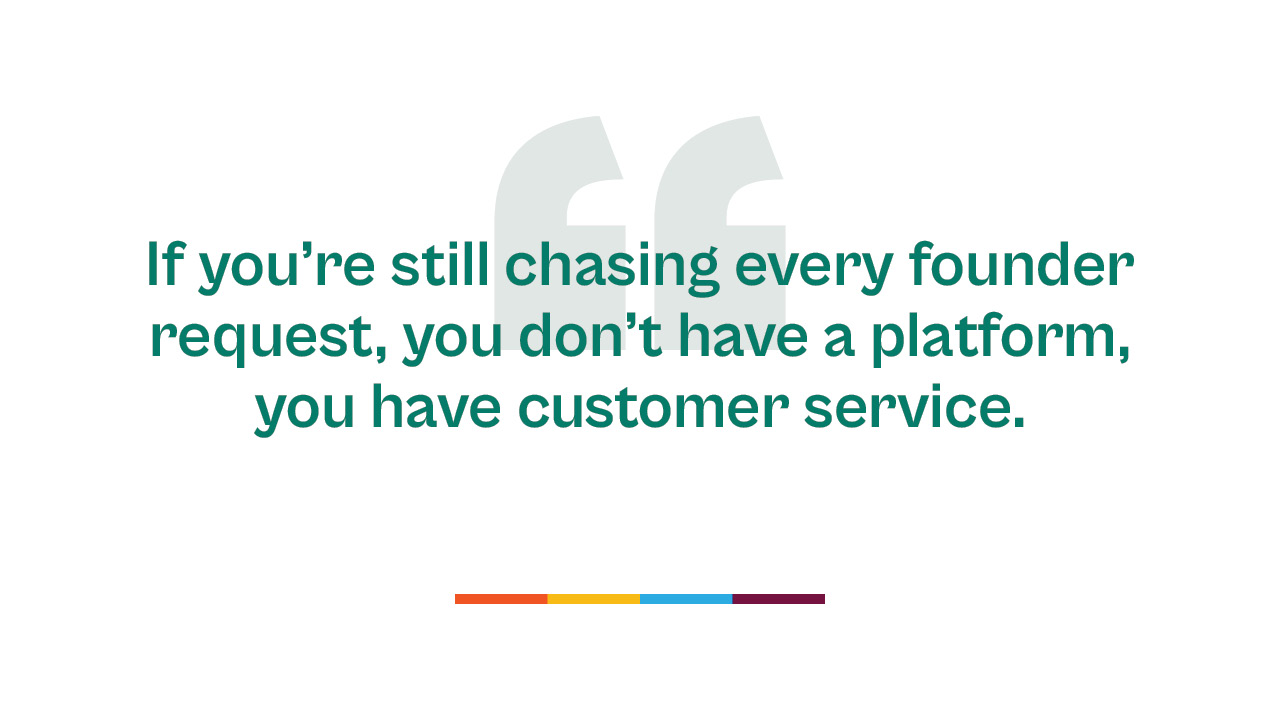
3. Data & Insights: Turning Portfolio Data Into Action
Every Head of Platform eventually reaches a turning point when they realize that “helping” portfolio companies is no longer enough; it’s about measuring what works.
In the past, many platform teams relied on intuition, anecdotes, or quarterly updates from founders. Today, the most effective platform leaders build systems that turn scattered information into clear, actionable insights.
If you’re running a lean team, this can sound daunting. But here’s the good news: you don’t need an army of analysts or an enterprise data warehouse to start. You just need the right tools and a habit of curiosity.
Here’s what that looks like in practice:
- Start simple, but start. Create a shared dashboard that tracks a few core metrics: revenue growth, cash runway, hiring velocity, churn, and next-round readiness. These indicators tell you when to lean in or step back.
- Look for patterns, not perfection. Your goal isn’t spotless data; it’s spotting trends that inform action. You want to know who’s growing fastest, who’s struggling, and why.
- Use comparisons wisely. Share anonymized benchmarks across portcos to help founders see what “good” looks like. Done tactfully, this builds motivation, not pressure.
- Turn insights into stories. Data alone rarely changes behavior. Combine the numbers with context: “Company A reduced churn by 40% after improving onboarding.” That’s what founders remember.
- Close the loop. Report your insights back to both general partners and founders. Show where platform initiatives are driving progress, it builds trust and strengthens investor relations.
A great platform head acts almost like an internal consultant, translating raw information into better decisions. Over time, this data becomes an asset in itself. It helps your fund identify growth opportunities, informs strategic programs, and even sharpens deal flow by highlighting which types of companies perform best in your ecosystem.
One platform leader we work with calls their dashboard “the conversation starter.” Instead of waiting for problems, they use data to open up coaching moments with a simple question: “Hey, your CAC is creeping up, have you thought about pricing?”
4. Operational Efficiency and Building Scalable Infrastructure
Ask any Head of Platform what eats up the most invisible time, and you’ll hear it immediately: the little things. Vendor contracts. HR onboarding templates. Chasing down invoices. Following up with three different accountants across four portfolio companies that all use slightly different systems.
It’s not glamorous work, but it’s where most platform heads lose their week. Without shared systems, the same questions (“Who do you use for payroll?” “Do you know a good startup lawyer?”) come up again and again.
That’s why operational efficiency isn’t just a back-office topic; it’s the backbone of scalable value creation. When your platform team builds consistent infrastructure, you free founders to focus on strategy and give your fund visibility into how each company is operating.
How to Build Scalable Infrastructure That Works
- Start with repeatable pain points.
- Audit where your portfolio companies spend the most time on non-core work like vendor sourcing, contract management, or reporting. Those patterns reveal your biggest leverage points.
- Create a vetted vendor network.
- Build a shortlist of trusted providers for HR, legal, finance, marketing, and compliance. Keep it current and vetted. This is one of the easiest ways to support portfolio companies and ensure consistency.
- Standardize procurement and onboarding.
- Shared templates and compliance processes save hours for each company. They also help your operating partners and GPs assess risk more accurately.
- Use tools to make it sustainable and scalable.
- Here’s where technology becomes your multiplier. Implementing a vendor management platform gives your team the right tools to streamline everything from procurement to reporting, freeing you to focus on strategy and community building.
- Real-World Example:
- Implementing a standardized vendor management system like Proven gives you the right tools to streamline platform work. It reduces vendor costs, simplifies investor relations reporting, and lets the platform team focus on higher-value initiatives. Learn more here.
- Codify the playbooks. Turn your ad hoc solutions into official processes for onboarding, reporting, vendor selection, and tech stack advice. The more consistent your systems, the easier it is for new portfolio companies to hit the ground running.
What Does Operational Excellence Really Deliver?
- Time back for founders. Hours saved on administrative noise mean more focus on customers, hiring, and growth opportunities.
- Clarity for investors. Streamlined data flows make investor relations and strategic planning smoother.
- Confidence for the platform team. When your infrastructure hums, you can redirect energy toward brand building, community management, founder coaching and other the high-leverage work.
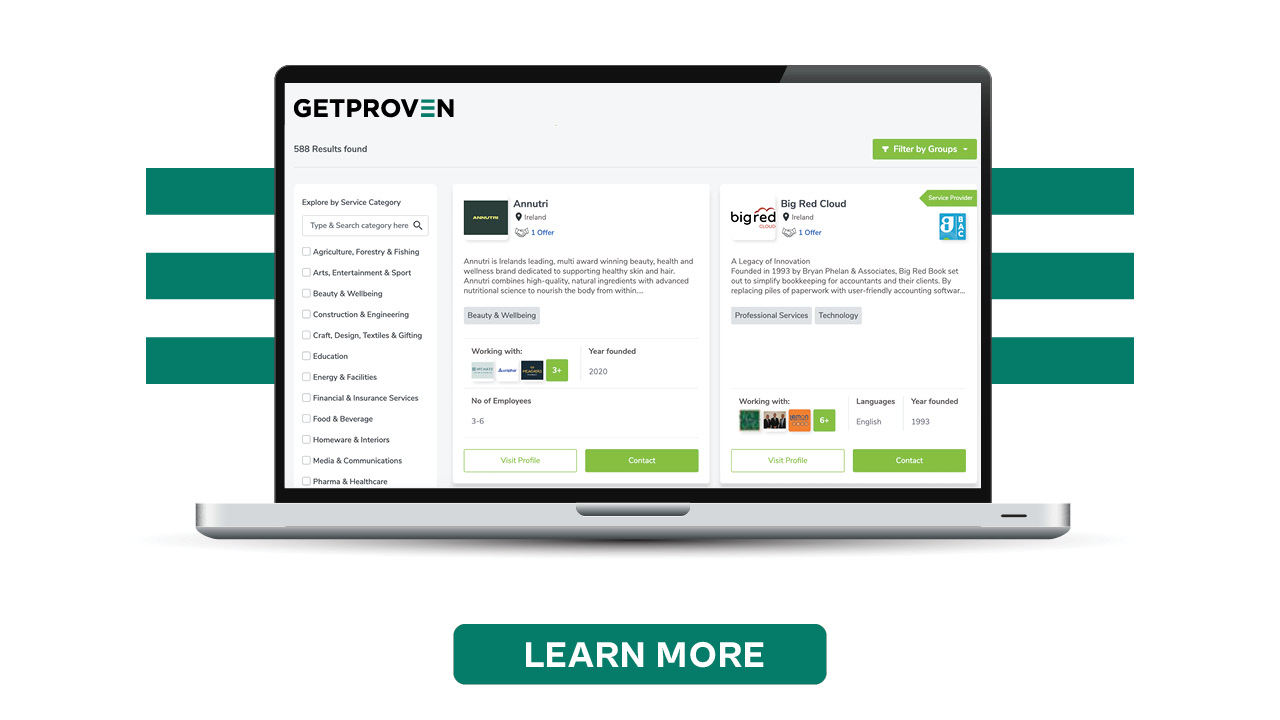
Conclusion:
There's a new center of gravity for value creation, especially among smaller and mid-sized funds. What started as a simple role is evolving into an integral part of post fundraising support in both PE and VC.
If you ask a platform professional about their role, none of them describe it as just support anymore. They talk about leverage, systems and impact.
The modern platform position sits at the intersection of people, process, and performance, bridging general partners, operating partners, and the founders driving the work. It’s part strategist, part operator, part community builder.
And for smaller or emerging vc firms, that’s a huge opportunity. You don’t need a massive platform team to deliver outsized results. You just need the right head of platform, someone who understands that structure creates freedom, that process creates performance, and that operational excellence is what turns just capital into real, measurable value creation.
When your platform strategy runs on scalable systems and trusted tools, you unlock something bigger: consistency.
The kind of consistency that builds confidence with limited partners, accelerates deal flow, and earns founders’ trust.
At Proven, we’ve seen this up close. The platform leaders who succeed long term are the ones who treat every new system, dashboard, and process as an act of service to make life easier for founders and progress clearer for investors. They turn platform work into a measurable advantage for the whole fund.
Your takeaway is simple: in an industry where everyone has access to capital, your ability to execute and to design a repeatable, data-informed, human-centered platform becomes your edge. That’s how you build a platform that compounds, not just manages.
Start by strengthening your operational foundation. Explore how Proven helps platform teams build scalable solutions that support founders, improve efficiency, and deliver measurable results.





